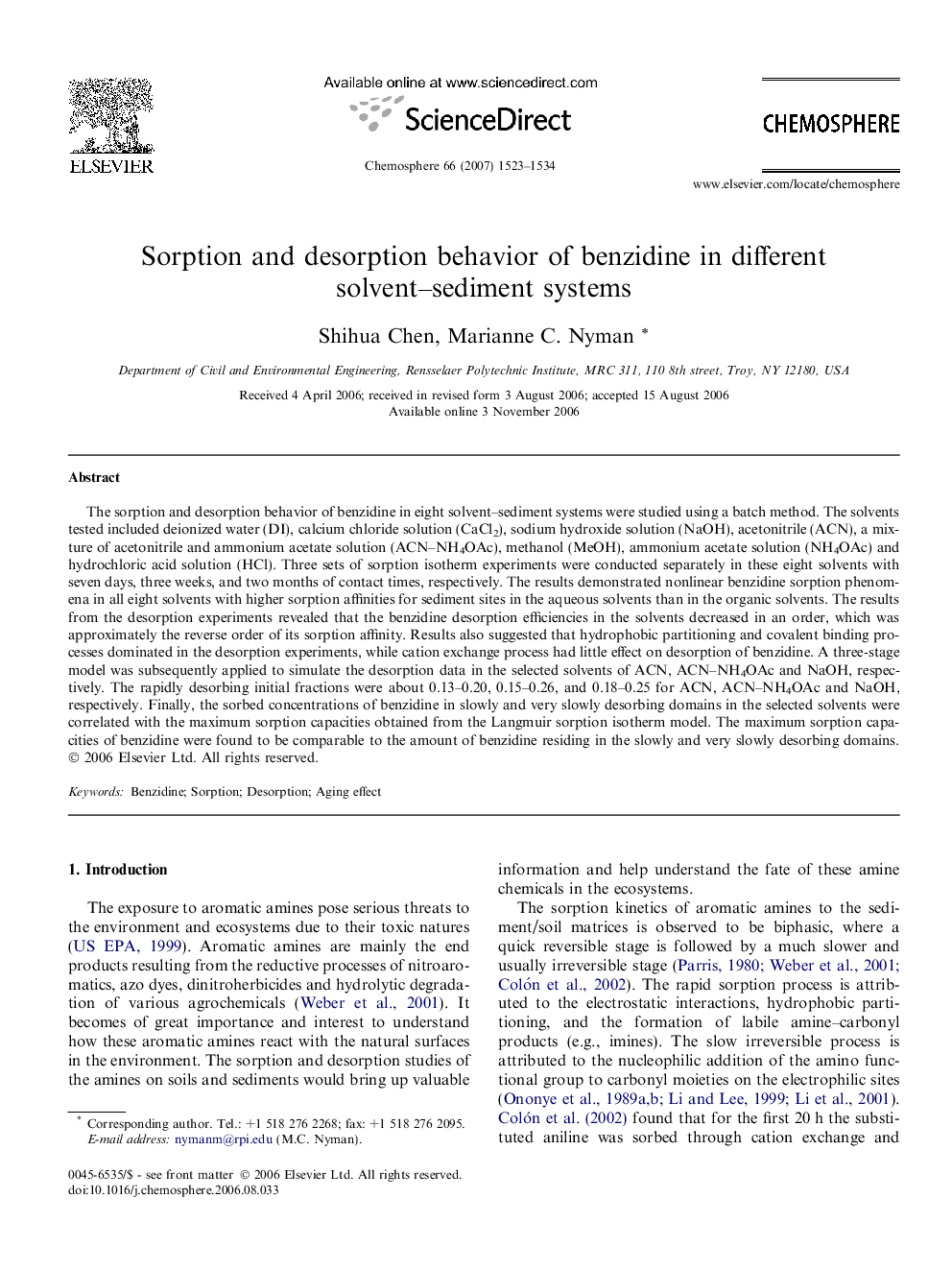| Article ID | Journal | Published Year | Pages | File Type |
|---|---|---|---|---|
| 4415191 | Chemosphere | 2007 | 12 Pages |
The sorption and desorption behavior of benzidine in eight solvent–sediment systems were studied using a batch method. The solvents tested included deionized water (DI), calcium chloride solution (CaCl2), sodium hydroxide solution (NaOH), acetonitrile (ACN), a mixture of acetonitrile and ammonium acetate solution (ACN–NH4OAc), methanol (MeOH), ammonium acetate solution (NH4OAc) and hydrochloric acid solution (HCl). Three sets of sorption isotherm experiments were conducted separately in these eight solvents with seven days, three weeks, and two months of contact times, respectively. The results demonstrated nonlinear benzidine sorption phenomena in all eight solvents with higher sorption affinities for sediment sites in the aqueous solvents than in the organic solvents. The results from the desorption experiments revealed that the benzidine desorption efficiencies in the solvents decreased in an order, which was approximately the reverse order of its sorption affinity. Results also suggested that hydrophobic partitioning and covalent binding processes dominated in the desorption experiments, while cation exchange process had little effect on desorption of benzidine. A three-stage model was subsequently applied to simulate the desorption data in the selected solvents of ACN, ACN–NH4OAc and NaOH, respectively. The rapidly desorbing initial fractions were about 0.13–0.20, 0.15–0.26, and 0.18–0.25 for ACN, ACN–NH4OAc and NaOH, respectively. Finally, the sorbed concentrations of benzidine in slowly and very slowly desorbing domains in the selected solvents were correlated with the maximum sorption capacities obtained from the Langmuir sorption isotherm model. The maximum sorption capacities of benzidine were found to be comparable to the amount of benzidine residing in the slowly and very slowly desorbing domains.
